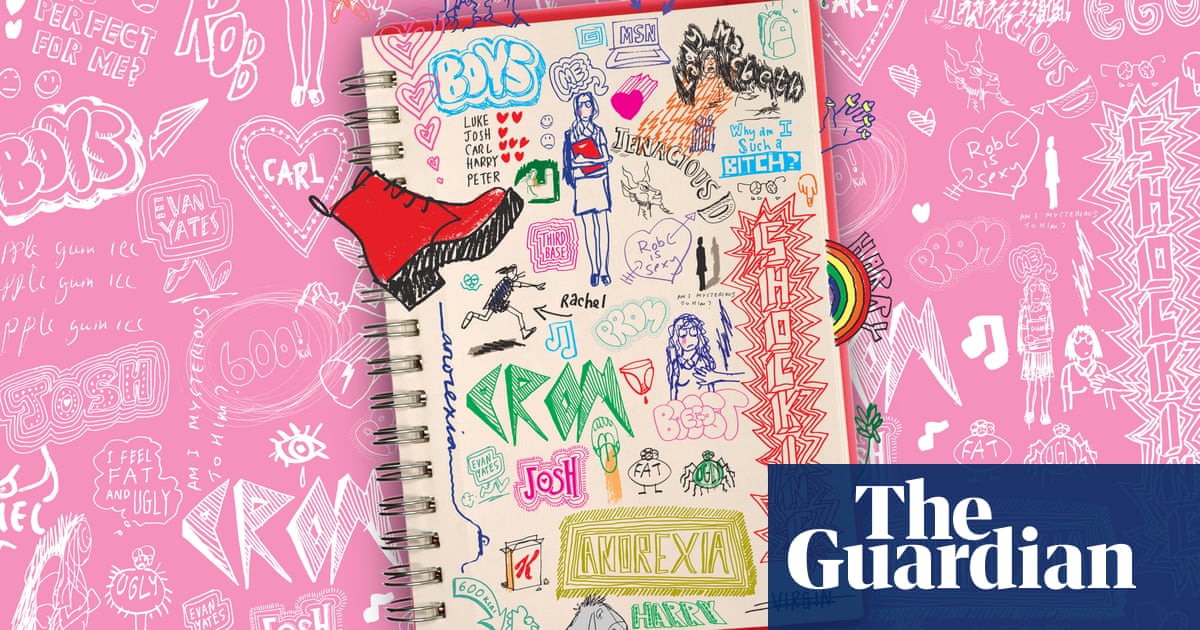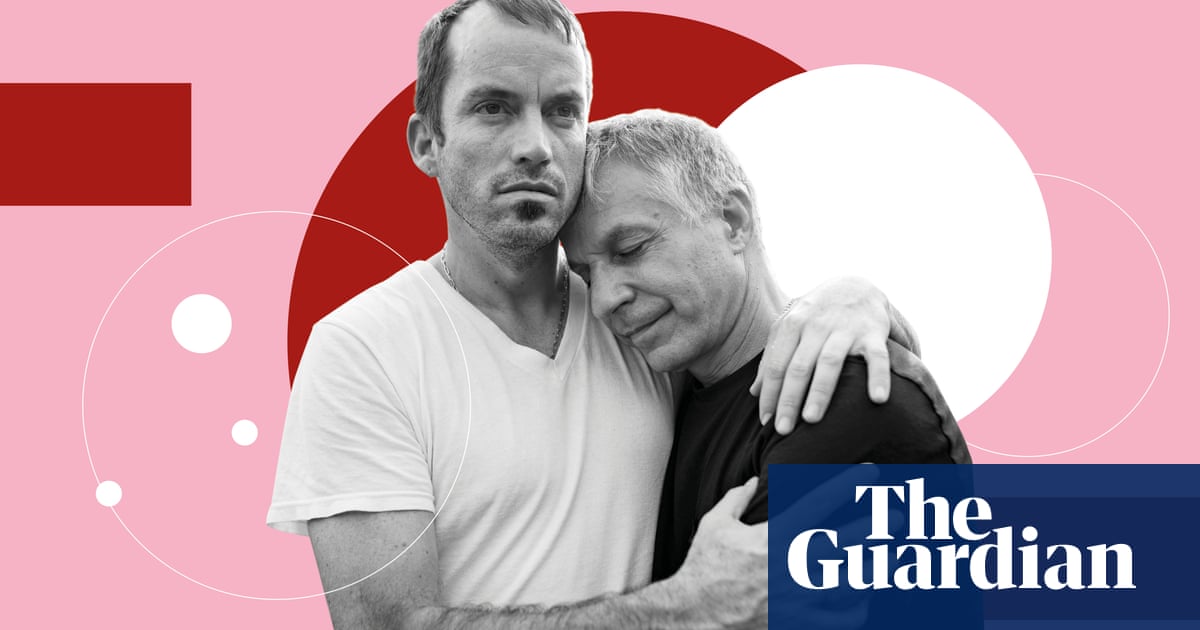
I posted a mirror selfie to Instagram last night, I tell Cindy Sherman. There were so many things to consider. Were the lighting and angle flattering? Did I capture my good side?
She laughs. “I do find it fascinating,” she says, “this whole tradition of taking a selfie in a mirror. You can see how a person’s posed, the way they’re holding the camera. There can be different outfits every day, but you’re always in your elevator. In a way it becomes a conceptual photography project. It’s funny.”
It’s a bizarre experience, discussing thirst traps with the woman who pioneered the selfie. We meet at the Museum of Cycladic Art in Athens, Greece, where an exhibition of Sherman’s earliest works has just opened. It’s 40 degrees and humid – even the Acropolis has shut for the afternoon. But sitting across from me in an exhibition room, the 70-year-old is effortlessly cool and elegant. She wears a white Loewe T-shirt, white shorts and Prada shoes, her silvery hair pulled back into a low ponytail. She is soft-spoken, kind and far more accommodating than you’d expect from someone with her level of success.
To say that Sherman redefined portrait photography is an understatement. Her signature practice – transforming herself into characters from saints and imperilled secretaries to grotesque clowns and elderly “ladies who lunch” (acting as her own makeup artist, hairdresser, stylist and director) – has influenced countless contemporary portraitists. She says her pictures are “lies”, and that she is constantly trying to “erase” herself in order to appropriate stereotypical female personae from TV, film and advertising.
Selfie culture can be damaging to young minds
Which is not that far removed from social media, I say. Are we all projecting a distorted image these days? “I definitely think technology is changing the world right now,” she replies. “I can’t imagine growing up with social media. It must be very difficult for a young person to navigate all of that without feeling so self-conscious. Everyone’s a content creator now or wants to be an influencer.”
The exhibition, Sherman’s first in Greece, brings together more than 100 of her earliest works. It includes her breakthrough series Untitled Film Stills (1977-1980), which consists of dozens of black-and-white photographs inspired by 50s and 60s Hollywood, film noir, B-movies and European arthouse cinema. Sherman captured herself evoking librarians, hillbillies, seductresses and more. She is Sophia Loren, Brigitte Bardot, Marilyn Monroe and Anna Karina – though her heroines never have names, united only by their rebellious refusal to follow convention.
In a series from 1980, Rear Screen Projections, she mimics a technique used by film-makers such as Alfred Hitchcock (as a child she watched Rear Window 10 times in one week) – shooting herself and her background separately and glueing the two images together.
“I was more impressed or influenced by movies than visual art,” Sherman recalls of her early practice. “I was thinking: ‘Why would she be in that situation, doesn’t she know it’s dangerous?’ It was also a way to handle being a vulnerable young woman and moving to New York, feeling that awkwardness and terror of a big city. It was a way to play-act confidence.”
Sherman was raised on Long Island. Her father was an engineer for the Grumman aircraft corporation, her mother was a teacher. She studied art at Buffalo State University, where she grappled with her shyness. She would go out in character, and stand quietly in the corner of parties wearing thrift-store clothes and makeup. It was after her then-boyfriend suggested she document her transformations that her idiosyncratic artistic voice began to emerge. Photography, she found, was “so much faster” and conceptual than painting.
So she moved to New York at 23, and over the subsequent decades continued to use styling, prosthetics and technology to interrogate female identities and women’s roles in society. She has embodied so many characters that the real Cindy Sherman has become something of an eccentric mystery. In 2012, when MoMA hosted a retrospective of her work, various attenders thought they had seen her there in disguise – one said she was in wire-rimmed spectacles, another believed she had come in a fat suit.
“It was totally not true, but it was fascinating to me,” she says, smiling.
Where did her desire to dress up originate, I ask? “It’s really related to my upbringing as the youngest of five kids,” she says with the easy self-awareness of someone who has been to therapy. “There was a gap of nine years between me and the next child, and 19 years between me and the oldest. I realised that my family had a whole other life before me. It was like a myth to me.
“Ultimately I felt like maybe they didn’t want me the way I was, so I should try to become a different person. A lot of little girls back then played dress-up. But instead of trying to become a princess or a fairy, something cute and feminine, I was always trying to be a monster, a witch or old lady.”
The exhibition comes at a time when Greece is experiencing a spike in violence against women. In response, the museum – which also holds famous marble figurines from the 3rd millennium BC interpreted by scholars as depictions of a female deity associated with fertility and rebirth – wanted to showcase the way Sherman has critiqued society’s depiction and treatment of women.
Whether it’s her series Color Studies, which shows women in private moments, or Centrefolds, which references erotic images from men’s magazines, her photographs centralise the female body. This has sometimes proved divisive. Because the women in Centerfolds look melancholic, vulnerable or fearful, New York magazine critic Jerry Saltz described them as the “unsexiest sexy pictures ever”, while some feminists condemned them as titillating.
“I see my work as feminist but I don’t see it hammering a message over somebody’s head,” Sherman says. “It’s subtle, because I’m a subtle person. I don’t feel like I would be a good advocate to debate anybody. I’m very bad at quoting things or citing whatever person’s opinion. That has to do with why I leave the pictures untitled. I think everybody’s going to interpret things differently, and I can’t control how somebody’s background in art history is going to affect how they see my work.”
Nonetheless, the debate around Sherman’s work made her a sensation. In 2011, Untitled #96 from Centrefolds sold at auction for $3.89m – making it the most expensive photograph ever at that time. She has also received countless awards including a MacArthur Fellowship “genius grant”.
Does she think representations of women in media have improved? “I think women are more aware of their place in society, and of their rights and power – or lack of it,” she says. “They’re also a little more aware of how our appearance is controlled; how we try to conform with what society expects from us. But it’s hard to know. The whole selfie culture – and the selfie tools that automatically correct your skin tone or get rid of blemishes – they can be damaging to young minds trying to figure out their place in society.”
But Sherman likes to play with some of these tools herself. In recent years, she has been posting Instagram portraits utilising apps and AI to distort her features. She looks quite weird in all of them, an apt comment on the dissociative nature of social media. “I do find it very fun, actually. But I’m a little frustrated now because whenever I’ve tried to make a new image for Instagram, I feel like it’s not new enough.”
I tell her it is both amusing and frightening that she once had to go through an entire process of styling herself, and now she can just press a button. Is she worried about the threat posed by AI?
“I definitely see the threat that it could become, especially with those deepfakes. But whenever I’ve typed in something like, ‘Middle aged woman, alone in a forest, in the style of Cindy Sherman’, what they come up with is so not a threat to me that I just laugh at it. It’s such a bad version of my work. But some of the faces I’ve created from AI are fantastic. It helps me think differently about what’s possible.”
These days, Sherman is trying to figure out her “next steps”. “I don’t feel like I’m going to retire, but ageing changes the work,” she says. “When I was younger I could play young and old characters, now my range is limited.”
She’s been through many iterations, not just professionally but personally too. She was married to the video artist Michel Auder for 17 years (during which he struggled with heroin addiction), before dating film-maker Paul H-O and musician David Byrne. Today, she’s enjoying the sights of Athens with her new partner.
Which reminds me, has she listened to Billy Bragg’s song about her, Cindy of a Thousand Lives? “Yes, I was very flattered, especially since we’ve never met. But I think we’re all made up of a little bit of different lives.”
And with that, we take a selfie together, and say goodbye.
Cindy Sherman at Cycladic: Early Works is at the Museum of Cycladic Art, Athens, until 4 November












